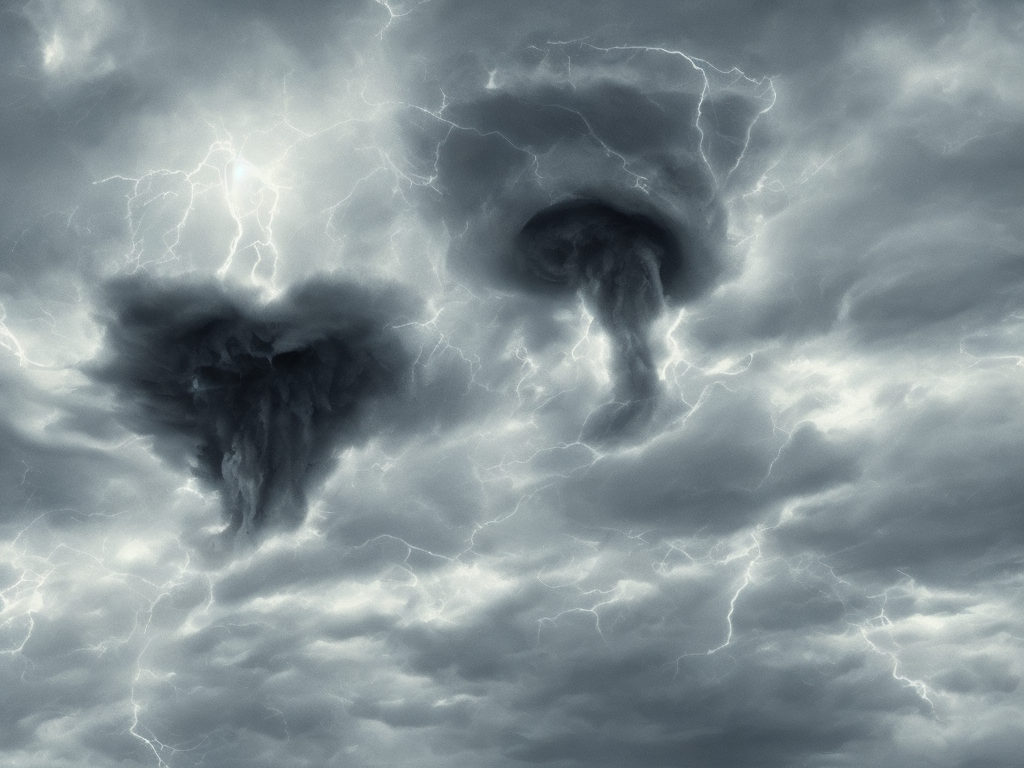
Tornadoes are one of nature's most destructive forces, causing significant damage every year in the United States. They are violent windstorms that occur in areas of low pressure, usually associated with thunderstorms. In extreme cases, they can cause significant damage to property and even result in loss of life. Due to the destructive nature of tornadoes, it is essential to have a system in place that can alert people of an impending tornado or give them ample time to seek shelter. This article will explain the difference between a tornado watch and a warning.
A Tornado Watch is an alert issued by the National Weather Service (NWS) indicating that conditions are favorable for the development of tornadoes in and around the watch area. A watch means that tornadoes are possible, and people in the area should be prepared to take immediate action if a warning is issued or if they see signs of a tornado forming. A tornado watch typically covers a large area, such as several counties or states, and lasts for several hours, depending on the weather conditions.
Tornado watches are usually issued when atmospheric conditions are favorable for the formation of tornadoes, but the formation of tornadoes is not guaranteed. The NWS issues a tornado watch when atmospheric conditions such as low-pressure systems, thunderstorm activity, and high humidity levels indicate the potential for the development of tornadoes.
People in the watch area should stay tuned to local media outlets or weather updates to keep abreast of any changes in the forecast. If a tornado warning is issued, they should act quickly and move to a safe location.
A Tornado Warning, on the other hand, is a more urgent alert issued by the National Weather Service when a tornado is imminent or has already been sighted. A warning means that a tornado has been spotted on radar, or eyewitnesses have reported seeing a tornado, and people in the immediate area should take shelter immediately. A warning typically covers a much smaller area than a watch, such as a county or a city, and lasts for a much shorter duration, usually 15-30 minutes.
When a tornado warning is issued, people should immediately take shelter in a safe place, such as a basement, storm shelter or interior room on the lowest floor of a building. They should stay away from windows, doors, and exterior walls, and use blankets or mattresses to cover themselves and protect their heads.
Tornado warnings are usually issued for specific locations and are based on a variety of factors such as weather radar data, eyewitness accounts, and ground reports from local authorities. These alerts are intended to give people enough time to seek shelter and stay safe during a tornado.
It is important to understand that a tornado warning is an urgent alert that requires immediate action, while a tornado watch is simply a notification that conditions are favorable for the development of tornadoes.
Some of the other key differences between a tornado watch and a warning are:
1. Coverage Area
Tornado watches cover a much larger geographic area than tornado warnings. A watch could cover an entire region or state, while a warning is typically issued for a much smaller area, such as a neighborhood or city.
2. Duration
Tornado watches often last for several hours, while tornado warnings typically last for 15-30 minutes. The duration of a tornado warning can vary depending on the severity of the storm and the likelihood of a tornado forming.
3. Level of urgency
A tornado watch is a precautionary alert that indicates that conditions are favorable for the development of tornadoes, but no immediate danger is present. A warning, on the other hand, is a more urgent alert that indicates that a tornado has been sighted, and immediate action is necessary to ensure safety.
4. Response
During a tornado watch, people should be vigilant and alert for any changes in the weather, such as darkening skies, strong winds, or hail. During a tornado warning, people should immediately go to a safe place and take shelter until the warning has expired.
Tornadoes are unpredictable and can occur anywhere, anytime, but the risk of tornadoes is higher in certain areas of the country, such as Tornado Alley in the central United States, where the weather conditions are more conducive to the development of tornadoes.
Some of the other factors that can increase the likelihood of tornadoes include the time of day, the season, and the specific weather conditions, such as high humidity and instability in the atmosphere.
In conclusion, understanding the difference between a tornado watch and a warning is important for staying safe during a tornado. A tornado watch means that conditions are favorable for the development of tornadoes, while a tornado warning means that a tornado has already formed or is imminent. If a tornado warning is issued, it is essential to take immediate action and seek shelter in a safe place until the warning has expired. Staying alert and prepared can go a long way in ensuring your safety during severe weather conditions.
 Self-Instruct
Self-Instruct